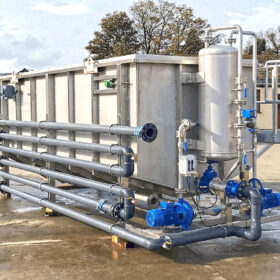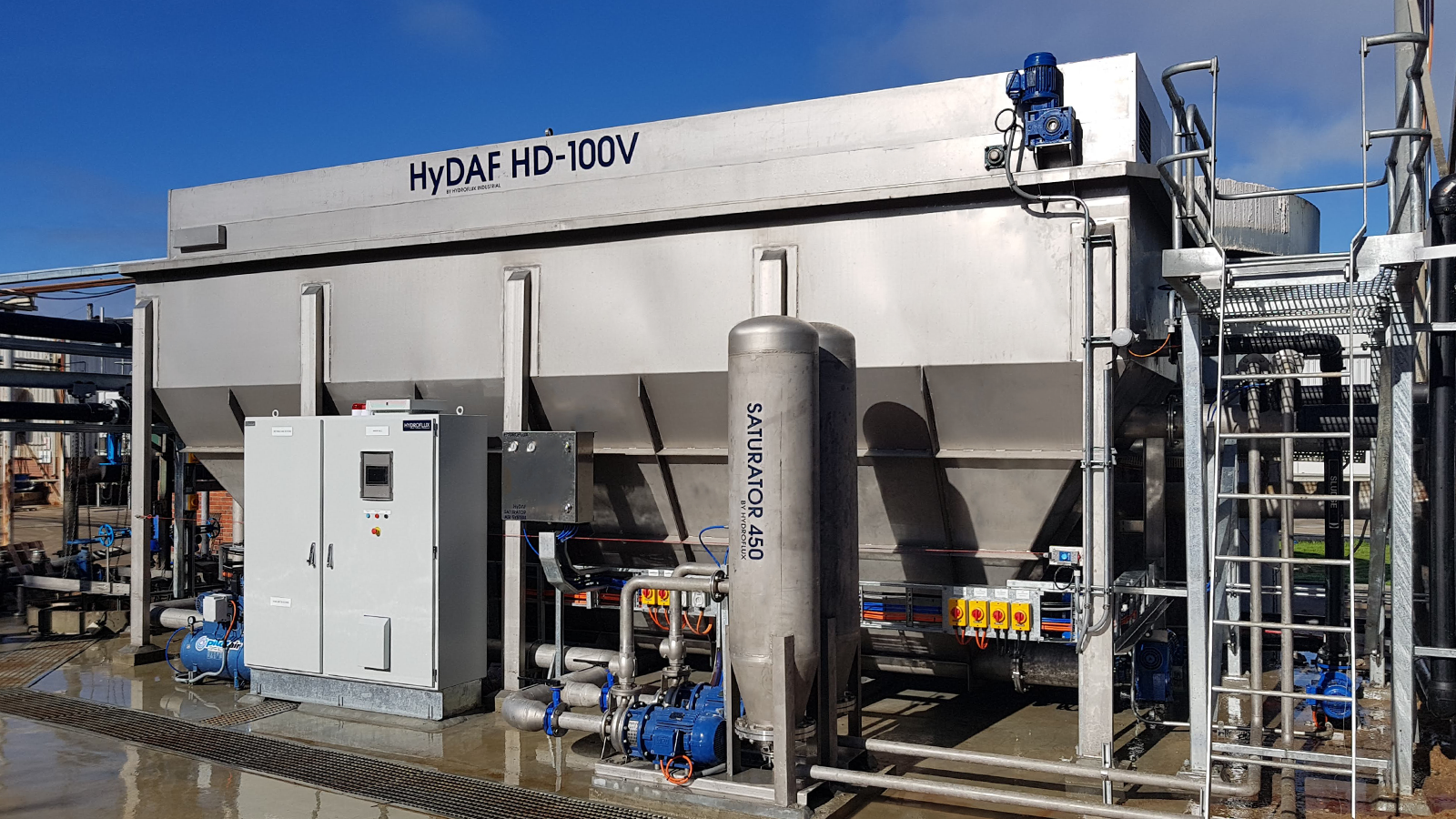Giá đã bao gồm trọn gói:

Flotation system consists of four major components—air supply, pressurizing pump, retention tank, and flotation chamber. The theory of dissolved air flotation (DAF) process is to separate suspended particles from liquids by bringing the particles to the surface of the liquid.
In most cases, DAF is an alternative process to sedimentation and offers several advantages,including better fnal water quality, rapid startup, higher rates of operation, and thicker sludge.
Additionally, DAF systems need less space compared with normal clarifers, and due to their
modular components, they allow easy installation and setup. This chapter covers types of
flotation, process description of DAF, theory of DAF, advantages of DAF application in wastewater treatment, application of DAF process in wastewater treatment, and application of DAF in landfll leachate treatment
Electrolytic flotation is also known as electroflotation. The bubbles are produced by passing adirect current between two electrodes and by generating oxygen and hydrogen in a diluted aqueous solution. Bubbles produced from electrolytic flotation are smaller compared with those produced from dispersed air flotation and DAF. Thus, this process is favorable for the removal of
low-density fragile flocs. This process is suitable for effluent treatment [20], sludge thickening,and water treatment installations of 10–20 m3/h. Figure 5.1 shows a typical arrangement of an electroflotation tank.
Dispersed air flotation has two different systems to generate bubbles, namely, foam flotation and froth flotation. In the foam flotation system, bubbles are generated by forcing air through a porous media made of ceramic, plastic, or sintered metal [21]. Figure 5.2 shows a typical arrangement for bubble generation through a medium or diffuser.
In the froth flotation system (shown in Figure 5.3), a high-speed impeller or turbine blade rotating in the solution is used to produce air bubbles.
Dispersed air flotation normally produces large air bubbles measuring >1mm in diameter [22].It is used mainly for the separation of minerals and removal of hydrophobic materials such as fat emulsions in selected wastewater treatment. This process was assessed for potable water treatment but was found unsuitable

